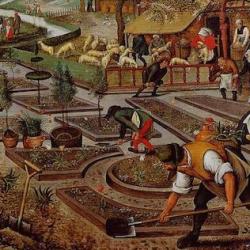Cambridge economist Ha-Joon Chang assesses the South Korean economic miracle in his Bad Samaritans: The Myth of Free Trade and the Secret History of Capitalism (pp. 12-15). It is indeed miraculous. South Korea has gone from being one of the world’s poorest countries to having a per capita income comparable to that of Portugal. It used to export ore, fish, wigs of human hair, but now exports mobile phones, flat-screen TVS, and autos. The life expectancy has gone up by 24 years in the past four decades, while death rates of babies has gone from 78 out of 1000 to 5 in 1 thousand. “Korea’s progress is as if Haiti had turned into Switzerland” (p. 12).
Contrary to some accounts, Chang does not think this happened because South Korean adopted a neo-liberal free trade system:
“What Korea actually did [between the 1960s and the 1980s] was to nurture certain new industries, selected by the government in consultation with the private sector, through tariff protection, subsidies and other forms of government support (e.g., overseas marketing information services provided by the state export agency) until they ‘grew up’ enough to withstand international competition. The government owned all the banks, so it could direct the life blood of business – credit. Some big projects were undertaken directly by state-owned enterprises – the steel maker, POSCO, being the best example – although the country had a pragmatic, rather than an ideological attitude to the issue of state ownership. If private enterprises worked well, that was fine; if they did not invest in important areas, the government had no qualms about setting up state-owned enterprises (SOEs); and if some private enterprises were mismanaged, the government often took them over, restricted them, and usually (but not always) sold them off again” (p. 14).
The government took control of foreign exchange, so that “hard-earned foreign currencies were used for importing vital machinery and industrial inputs.” Korea appears to be a free-trade success before of exports, but “export success does not require free trade, as Japan and China have also shown.” In the larger scheme of things, Korea’s exports “were means to earn the hard currencies needed to pay for the advanced technologies and expensive machines that were necessary for the new, more difficult industries, which were protected through tariffs and subsidies.” The point was not to protect industries forever but to “give them the time to absorb new technologies and establish new organizational capabilities until they could compete in the world market.”
Korea is not unique, Chang argues: “practically all of today’s developed countries, including Britain and the US, the supposed homes of free market and free trade, have become rich on the basis of policy recipes that go against the orthodoxy of neo-liberal economics” – using protections, subsidies, and rules that discriminated against foreign investment.










